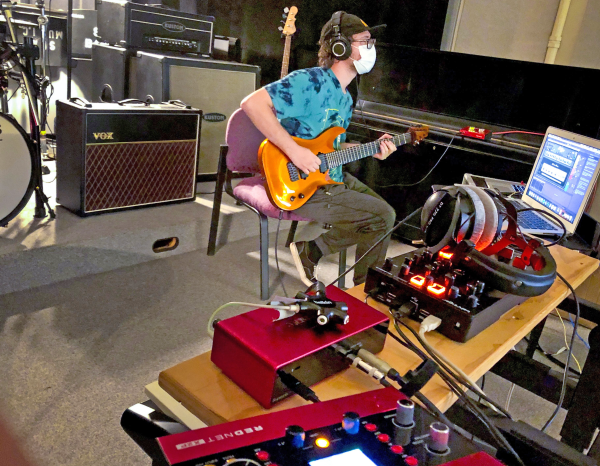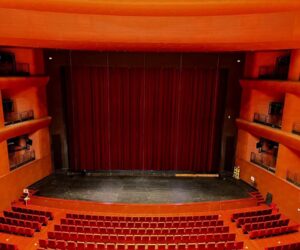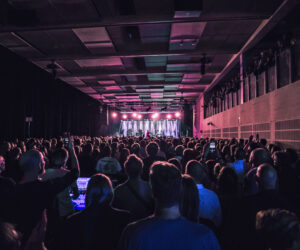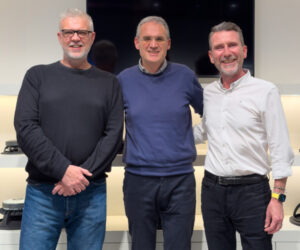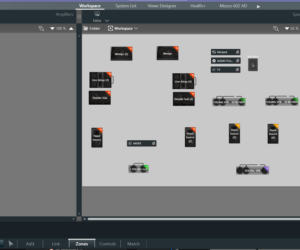Stephen F. Austin State University (SFA) in Nacogdoches, TX has utilized Audinate Dante networking in its music and sound recording technology programs since 2018, and this year it took on an additional role for the music department in helping to enable social distancing.
“When we looked at returning to classes in the fall of 2020, we had to figure out how to hold music practice with safety considerations related to COVID,” says James F. Adams, Assistant Professor of Music and Director of Sound Recording Technology at the university. “We knew we needed to separate students into individual rooms because of the nature of many of the instruments. And, not surprisingly, it was Dante that came to the rescue.”
Dante is designed to distribute hundreds of uncompressed, multi-channel digital audio via standard Ethernet networks, with low latency and tight synchronization. The low latency is particularly important in live performance — at SFA, keeping the latency under 7 milliseconds roundtrip across networked rooms allows students to perform in an isolated space while still hearing others in nearly real-time.

“To still have live music classes we had to ensure there was both minimal latency and that we could host students with as little risk as possible,” Adams explains. “That meant vocalists needed their own room. Woodwind and brass players needed their own space. But with Dante behind all of our signals in and out of these locations we were seeing a sub-5 millisecond roundtrip delay in delivery from one room to another. For most that delay will be imperceptible. And so far, it has worked excellently.”
He notes the music department had already planned a move into a temporary space at the start of the 2020 Fall semester due to the planned construction of a new music facility. The temporary space for the music department – once used as a facility for broadcast coursework – came with the need for updated infrastructure. While not a perfect setup for music, it did mean Adams and his team could plan for social distancing from day one of the retrofit.
“It actually worked out well in that we had multiple classrooms that were being unused,” Adams says. “We could make each of them an individual performing space and utilize Dante throughout.”
Six rooms are currently networked for live performance. Three of those spaces can welcome multiple performers who are not utilizing “wind power” for music. The other three are for single occupants. All rooms have HEPA filters and are cleaned after each use.
Focusrite RedNet X2P audio interfaces, which offer 2×2 Dante connectivity, are used in all rooms for both input and output. Microphones picking up the music being made in each room use the X2P to convert the signal to Dante. The Dante signal coming back into the room – typically the mix from the main control room – utilizes the outputs on the X2P devices, with students tapping in with headphones. Dante-native Focusrite RedNet AM2 devices, which offer stereo analog output for Dante networks, are also used for headphone output in rooms where multiple students are allowed.
Multiple Focusrite RedNet 2 I/O devices, a Focusrite A16R MkII I/O device, a Focusrite RedNet PCIe-R, and multiple Focusrite RedNet 5 devices – which enable Dante integration with Pro Tools – are utilized in the main control room.

“From the control room we mix the signal for distribution to students across the network,” Adams says. “We have connected everyone from singers, guitarists, trumpets, clarinets, drummers, you name it. It sounds great for every use we’ve needed.”
Two additional performance rooms will be wired for Dante at the start of 2021, and once the new music facility is complete it will be connected by a Dante network. “We learned a lot this semester about how flexible and scalable Dante really is,” Adams says. “People can still achieve a lot of great things if they can’t see each other. If they can hear one another, and there is minimal delay, then that is definitely enough. We’re at such a negligible delay right now that we can perform small concerts together. It’s very exciting.”
At present, the department is utilizing 250 Dante signals, but Adams says he expects that count to go up as the university begins to consider the use of audio-over-IP networking outside of the music department. “The IT department is looking to us as a model for AV right now,” he concludes “I’m getting asked daily about how we successfully solved our social distancing challenges. There are a lot of ideas about what our system will look like long term, but it is obvious Dante is going to expand throughout campus. This is a solution that isn’t just short-term. It’s a long-term answer.”


